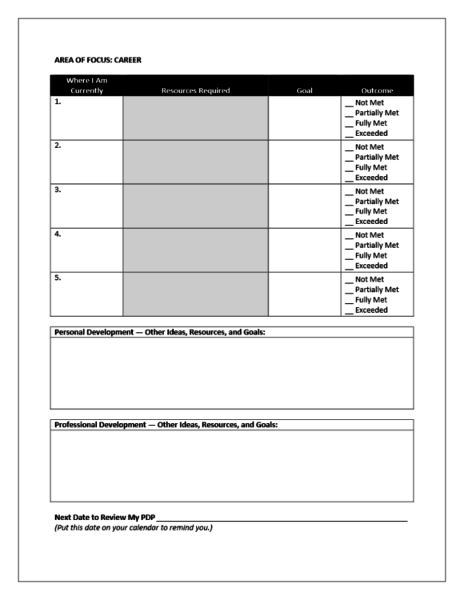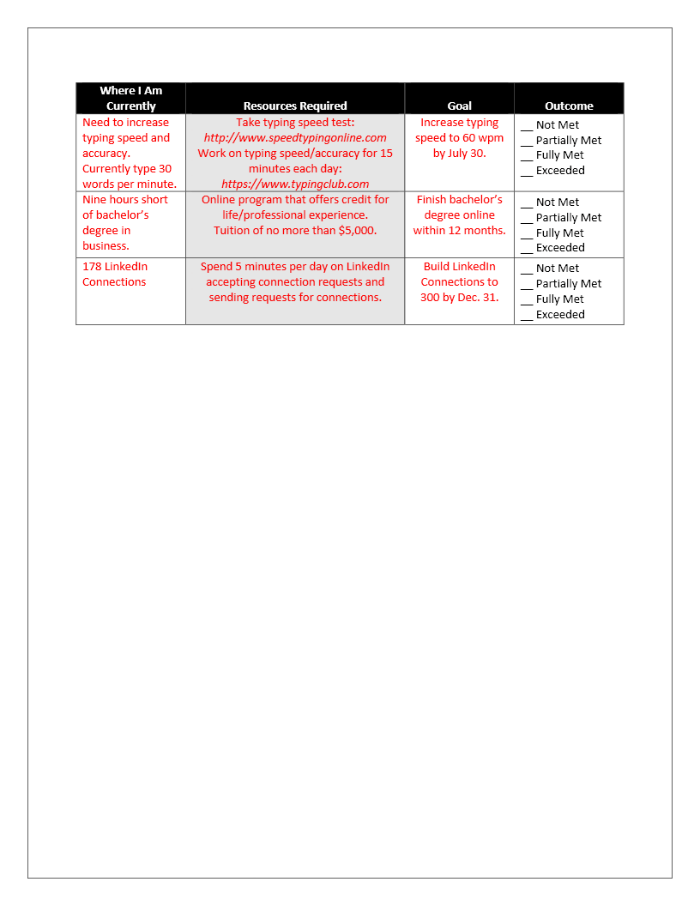
There’s nothing more painful (and maybe you feel foolish too) than going through an emotional career crisis. At this point, you probably don’t know what you want to do. But what you are 100% certain of is that you don’t want to continue doing the job you’re currently doing.
In some ways, you are stuck. You can’t stay, but you don’t know how or when to leave either and where to go.
This happens to all of us. We ALL experience the need to manage our careers better. And, at times, change up our professional lives in search of new career adventures and challenges.
Career change is big business…
Performing a Google search for the term ‘midlife career crisis’ will provide you with more than half a million search results.
Yup! That’s a lot!
Any midlife crisis, career crisis or otherwise, has provided self-help authors with books to write, comedians with jokes to make, and pharmaceutical companies with “get well” products to sell. 🙂 There are quite a few resources available to help you make a successful career change.
And although widely accepted in pop culture as equal parts punch line and sad fact of life, the science community has scant empirical evidence that any midlife crisis is real.
Longitudinal studies conducted by researchers in Canada tracked two groups of people over a period of 25 years and found that midlife was not a time of unhappiness, but rather that happiness actually steadily increased over their lives.
So, is this period in life beginning in our 40s and lasting to our 60s a time of crisis?
Maybe.
But perhaps not in the way popular culture has characterized it – as a time of desperately trying to hold on to our youth and fearing our futures. It’s perhaps better thought of as a time to decide with these key points before you throw your career a change-up in mid-stride.
In fact, the origin of the word crisis means “to decide” – decide if what we have chosen for ourselves to this point in life is what we wish to continue doing, or are there other choices that would better suit who we’ve become?
Relationships.
Homes.
Careers.
Making decisions about our jobs is often one of the most difficult because so many other life areas are immediately impacted by a career change.
Because of the far-reaching implications of this particular decision, changing your career may just feel like a true crisis situation in the sense of, “batten down the hatches” and “all hands on deck” as you stare into the stormy waters ahead.
Need a boost of career inspiration because you feel alone?
Here are just a few very well-known professionals who didn’t start their careers until later in life:
- Vera Wang started her career as a designer @ the age of 40. Now at 67, she is best known for her stunning wedding dresses and evening wear for celebrities attending red carpet event.
- One of my favorite television personalities, Julie Child was 50+ before she wrote and published her first cookbook, The French Chef. Before 1961, she was an unknown chef and teacher at the informal school they called, L’école des trois gourmandes (The School of the Three Food Lovers).
- The automobile icon, Henry Ford, was 45 when he invented the infamous Model T car.
How’s that for inspiration!
If you are experiencing a midlife career crisis and thinking of making a major career change, consider a few things:
Build on What You Know
You have experience and that’s valuable.
To walk away from 15 years in marketing to become a goat herder is not a good career move. The smartest move is to build a new career that taps into the same skill set from your former career.
Go (at least a little bit) with what you know – this will make your career transition much easier. It will also make it easier for employers to offer you a job if they feel confident you have the right skills for it.
For example:
An auto engineer picks up a temporary teaching certificate after a three-month crash course in principles of education and becomes a high school CAD instructor. It doesn’t pay as much, but the intangible rewards more than offset the smaller paycheck.
A real estate agent, tired of the late-night phone calls and 60-hour workweeks, starts flipping properties on the side.
She knows the market, the inspectors, the contractors, the lenders – she’s plugged into the local real estate grid from the top down. So, she takes what she knows (of immense value) and starts her own property management company buying, selling, and renting properties.
A CPA becomes Director of Development for a local non-profit, a pediatric nurse takes the helm at a drop-off kid care franchise – you get the idea. Build on what you’ve got.
Make a Critical Self-Assessment
Determine what skills are required for the career you have in mind. Conduct research using trusted sources.
Vault.com is an excellent resource for career information and is updated annually.
Don’t end your research efforts there – request an informational interview with someone working in the field. Ask them what they like and don’t like, what skills are required for success, and the best way to enter the career.
Based on the information you gathered, make a list of your current professional skills and personal attributes that could be leveraged in this new career.
Your list should include proficiency using computer software programs (these are transportable skills required on almost every job), special training and knowledge acquired on-the-job.
Make a second list of the skills you lack and determine what it would take to acquire them.
Learn More
If you’ve determined that you need to learn new skills to enter your new career choice, adult education courses, the local community college, technical schools, four-year universities, workshops and seminars are some options.
Many four-year colleges and universities are now offering courses, and in some cases, entire degree programs, online. Virtual learning isn’t for everyone, but if the courses you want aren’t offered locally, it can be a saving grace to help you achieve your goal.
Seek Support
Changing to a new line of work ranks as one of the top 20 most stressful life events on the Holmes-Rahe Life Stress Inventory.
This isn’t a time to go it alone. Make sure the important people in your life know what you are planning and you have discussed what it means for all involved.
Life is going to change.
Will that be okay?
Make sure someone will have your back when the moments of self-doubt creep in as they often do when facing uncertainty.
Finally, consider this quotation from Thoreau’s Walden:
“I learned this, at least, by my experiment; that if one advances confidently in the direction of his dreams, and endeavors to live the life which he has imagined, he will meet with a success unexpected in common hours.”
What some “hit the ground running” techniques?
Developing Your Personal/Professional Development Plan (PDP) is the best next move.
Your Personal/Professional Development Plan (PDP) is your roadmap for your career (and your life), helping you identify the steps to take to help you reach your dream job as well as live the life that you want. On the career side of things, your plan provides structure for professional growth and outlines explicit learning and development goals so you know exactly what you need to do to get from where you are now to where you want to be. On a personal level, it helps you identify areas for personal growth and change — which, of course, can have a significant impact on your career as well.
This conversation in “Alice’s Adventures in Wonderland” by author Lewis Carroll, illustrates the need for planning your life and career:
- “Would you tell me, please, which way I ought to go from here?” (asked Alice)
- “That depends a good deal on where you want to get to,” said the (Cheshire) Cat.
- “I don’t much care where —” said Alice.
- “Then it doesn’t matter which way you go,” said the Cat.
- “—so long as I get SOMEWHERE,” Alice added as an explanation.
- “Oh, you’re sure to do that,” said the Cat, “if only you walk long enough.”
You’re more likely to get where you’re going if you decide where you want to go, and then plan your journey. If you don’t, you’ll still get “somewhere,” but you might look up in a few years and wonder how you got “here.”
Some employers offer professional development planning; however, you should take a more well-rounded approach — one encompassing both personal and professional development. And if you had previously engaged in a corporate professional development process, it may have been to identify how you can move up within that organization — and staying with your current employer may not be your long-term goal.
The PDP examines what you need to work on in six different areas of focus: Family, Spiritual, Social/Relationships, Physical, Financial, and your Career.
This process isn’t meant to be difficult or lengthy. It’s a snapshot of where you are right now and how to move forward. But it should be something that you revisit regularly — at least once a year — to make sure that you still want to go where you said you did, and that you’re still on the right path. You may only have one or two items in some areas of focus, while you may have four (or more!) in other areas. Your plan will be unique to you!
Getting Started
The first thing to do is an assessment in each area. Use the Assessment Worksheet to guide you.
For your career goals, for example, examine job postings for the job that you’d like to have, or your dream job. Is there a particular degree required? A certification? Specific software skills? These will help you determine what you need as minimum qualifications for the job.
Once you’ve completed the assessment process, you’re ready to work on creating your Personal/Professional Development Plan.
Where I Am Now
Drawing on your assessment, identify specific items to work on within the six areas of focus. This can either be a short-term task (such as increasing your LinkedIn connections) or a long-term goal (such as finishing your bachelor’s degree). In the “Where I Am Now” box, write down your current status. For example, “Nine hours short of bachelor’s degree in business.”
Be as specific as you can. Instead of listing “Need better computer skills,” for where you are now, be specific. Do you need to improve your typing skills? Word processing? Excel? Coding? HTML programming? This will help you as you set your goal and also help you decide what resources will help you reach your goal.
Resources Required
Answer this question: What actions are needed to meet my goal?
The answer will help you identify the resources required to get you from “here” to “there.”
Depending on your goal, there are a wide variety of resources that can help bridge the gap. For example, if you want to learn a new language, you could take an in-person class, work with a tutor, take an online course, use an app, or learn by immersion. The choice is up to you.
When considering which resources to incorporate into your PDP, use this list for inspiration:
• In-Person Class (Academic Programs)
• College or University Degree
• Online Course (Including Udemy, Lynda, etc.)
• Certification Program
• Workshop
• Conference
• Software
• App
• Membership Site
• Book
• Workbook
• Manual
• Professional Networks (Joining an Association)
• Mentoring/Networking
• Learning Through Practice (Portfolio Development)
• Research Activities
• Professional Activities
When considering the right resources to bridge the gap from where you are to where you want to be, consider your learning style (do you prefer in-person training versus an online course? Self-study program or learning with others?), your timeline (could you improve your language skills faster with an online app that you can start using today versus waiting to enroll in a six-week class that starts next month?), and your budget.
Sometimes the resource will simply be your time. For example, if you want to build your online network, committing to spending five minutes per day on LinkedIn — asking for (and accepting) LinkedIn connection requests — will help you do this.
For your Social/Relationships area of focus, this may mean establishing or growing your online presence. For example, setting up a LinkedIn profile, or growing your number of LinkedIn contacts. Or increasing the number of Facebook friends you have. Or having a certain number of “real life” get-togethers with friends each month.
Remember, the resources you choose are up to you!
Goal
When setting your goal, look at where you are now, and also what you need to be successful in your area of focus. When possible, make sure your goal meets the “SMART” criteria — Specific, Measurable, Attainable, Relevant, and Time-Bound. Quantify your goal in terms of numbers, dollars, or percentages. Instead of: “Be debt-free by Dec. 31,” write “Pay off $6,580 in student loans by Dec. 31.” Define exactly what you want to accomplish, by when.
Outcome
When evaluating the outcome, you may not be able to assign a score right away. The criteria offered includes: Not Met, Partially Met, Fully Met, and Exceeded. If you review your PDP on a regular basis, you can assess your outcome in terms of where you are right now in meeting your goal, but continually update your progress as time goes on.
The question to ask yourself is: How much difference has this made to improving my [focus area].
For example:
How much difference has this made (right now) on improving my career?
How much difference has this made (right now) on improving my family relationships?
How much of an impact have I made (so far) on improving my finances?
At the bottom of your Personal/Professional Development Plan is a review date. Choose a date when you will re-evaluate where you are, your progress, and your goals. Ideally, you will want to do this once a year. December is often a good time as you look at the year ahead, but you may also choose to do this on your birthday or another significant anniversary (for example, your annual anniversary of your employment with your current company). Be sure to put this date on your calendar.
Once you’ve developed your PDP, post it somewhere you will be able to look at it often — for example, on your refrigerator, or on the wall next to your desk at home. This roadmap will ensure that you know where you want to go and that you stay on track.
Take This Personal/Professional Assessment To Determine Your Ideal Career Change
How is my spiritual health? What do I want my spiritual life to be like?
________________________________________________________________________________
________________________________________________________________________________
________________________________________________________________________________
________________________________________________________________________________
How is my physical health? Is there anything that I need to work on with my health?
________________________________________________________________________________
________________________________________________________________________________
________________________________________________________________________________
________________________________________________________________________________
Financially, how am I doing? Do I need to improve my financial well-being? How?
________________________________________________________________________________
________________________________________________________________________________
________________________________________________________________________________
________________________________________________________________________________
Below is a Personal/Professional Development exercise to help you focus on the right areas of your career:

Example on how you might complete the above:
